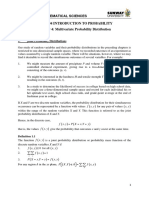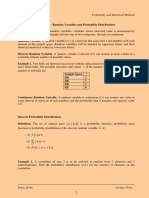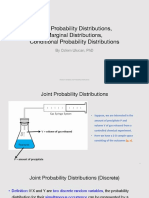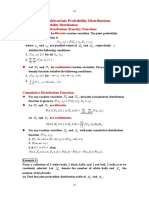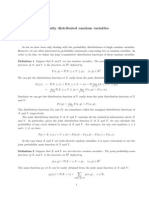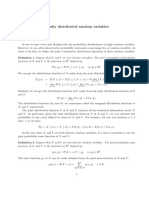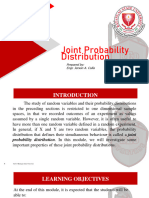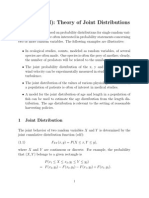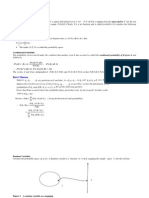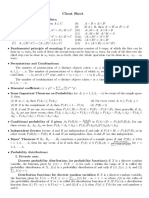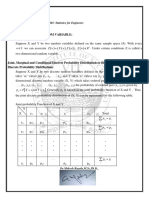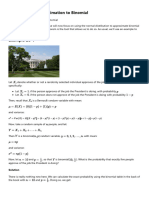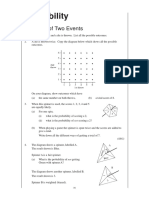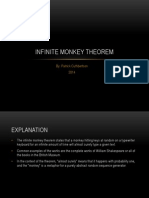0% found this document useful (0 votes)
7 views62 pagesJoint Probability Distribution Partial Lecture
The document discusses the concepts of discrete and continuous random variables, including joint, marginal, and conditional probability distributions. It provides definitions, examples, and solutions related to joint probability functions and distributions, as well as the calculation of probabilities in various scenarios. Additionally, it covers the relationship between random variables and how knowledge of one can affect the probabilities of the other.
Uploaded by
ZAYL BAGABALDOCopyright
© © All Rights Reserved
We take content rights seriously. If you suspect this is your content, claim it here.
Available Formats
Download as PDF, TXT or read online on Scribd
0% found this document useful (0 votes)
7 views62 pagesJoint Probability Distribution Partial Lecture
The document discusses the concepts of discrete and continuous random variables, including joint, marginal, and conditional probability distributions. It provides definitions, examples, and solutions related to joint probability functions and distributions, as well as the calculation of probabilities in various scenarios. Additionally, it covers the relationship between random variables and how knowledge of one can affect the probabilities of the other.
Uploaded by
ZAYL BAGABALDOCopyright
© © All Rights Reserved
We take content rights seriously. If you suspect this is your content, claim it here.
Available Formats
Download as PDF, TXT or read online on Scribd
/ 62


